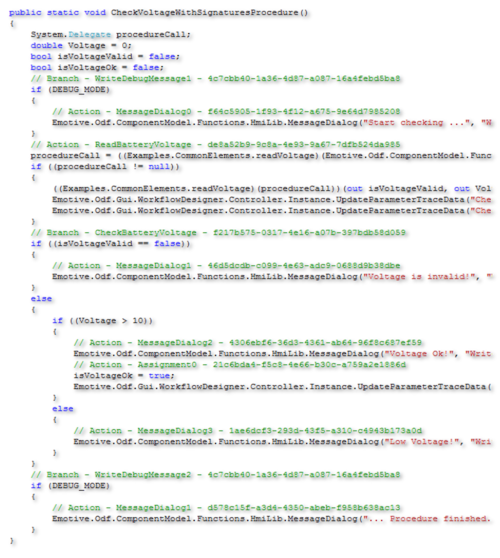OtfRuntimeEnvironment
Within the development environment OTX sequences are generated and processed. In the execution environment they are executed. For the execution of workflows on-the-fly code is generated and compiled. The runtime requirements of the runtime environment is thus, if one excludes the time for on-screen input and output, negligible. The running time is largely determined by other layers, such as the diagnostic runtime system.
The following figure shows the basic structure of the OTX runtime environment.

|
| Structure of the OTX-execution environment |
There are two types of data provision for the OTX-processes:
- In OTX format
- In binary format
When deploying the expiration dates in the OTX format they are translated directly after loading just-in-time. If the data is in binary format provided, these can be used directly without translation. With the development environment binary data can be generated and encrypted against subsequent disassembly. With the binary format there is a secure, slim and fast transfer format, for example, for rolling out the procedures in the workshop area.
Code Generation
For the execution of processes code is generated and compiled (Package = Namespace, Document = Class, Procedure = Method). Currently C# code is generated. It is later possible to other code, such as Java or Python, to generate.

|
| Generated C# code |
For each OTX document a C # file is generated. The clear and streamlined code corresponds to the code of an expert in diagnostic procedures. He is on-the-fly generated, compiled and executed.
Advantages:
- Maximum performance
- suitable for control tasks
- Minimal resource requirements
- Precompiled processes can be distributed extremely compact
- Any target systems conceivable
- Pocket PC, browser, tablet PC, etc.